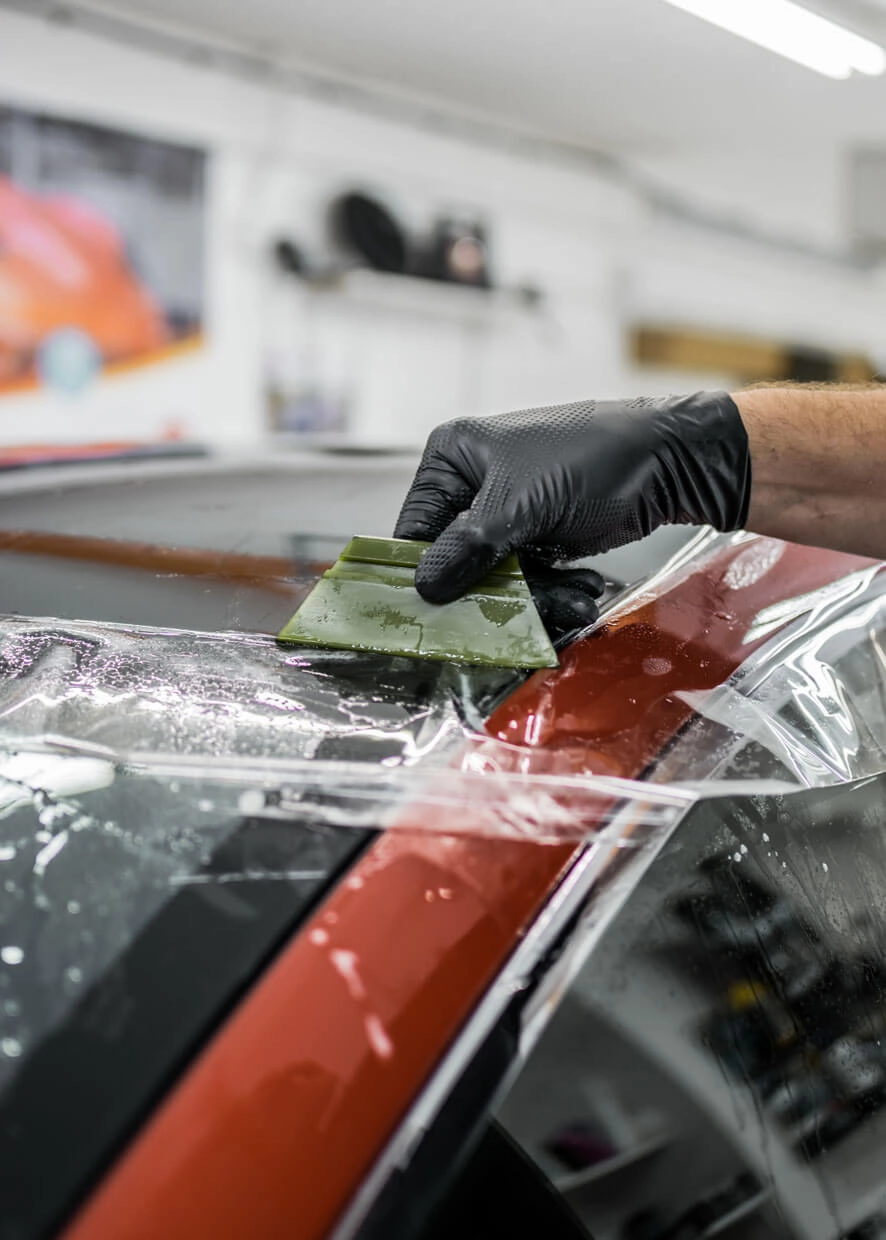Regardless of how carefully a car is used, various surface defects such as chips, scratches, and abrasions inevitably appear on its paintwork over time. If you ignore this problem, then sooner or later such damage to the paintwork, initially invisible, can turn into darkened and rusty areas, which will entail a real headache for the car owner in the form of expensive body repairs. A special colorless polyurethane paint protection film with a thickness of about 200 microns (of which about 165 microns are polyurethane) is used specifically for protective purposes.
Among the new types of protective coatings for cars, anti-gravel paint protection film stands out due to its affordable price and good strength properties. Covering the front of the car, headlights, and fog lamps with polyurethane film will protect the paintwork from the abrasive effects of sand, road gravel, crushed stone, impacts from small stones, and roadside branches.
Benefits of protective film:
Car wrapping with PPF car film is becoming increasingly popular, with the number of PPF-covered cars in traffic on the rise. Cars are covered with different films, including vinyl (an economical option) or more modern and expensive polyurethane.
Of course, the quality of the material, the professionalism of the craftsman, and the conditions under which the film is applied and used all play a significant role. However, common traits can be outlined for various protective films and their application methods, including a number of advantages and disadvantages of such adhesives.

How to care for your car:
There are no special requirements for film maintenance. Matte films cannot be polished, and when visiting a car wash, you must inform the employees that the car is covered with film to ensure they don't bring the spray gun too close to the surface. Some parts are joined edge-to-edge, in places where the film does not extend behind the part, and at a certain angle and under enormous pressure, it can be torn off. Although, as experts say, this is only possible with poor-quality work. Usually, the film is tightly adhered, and you can't easily lift it off the surface. The service life of most films is at least five years. To prevent the film from prematurely yellowing, it is necessary to clean the car in a timely manner.
Why you should trust the work to professionals:
The process of covering a vehicle with a transparent film is quite complex. A high-quality body wrap typically involves several stages: preliminary body preparation, application of a vinyl film that conforms to the body's shape, and securing the film to the body. Applying a film without theoretical and practical knowledge in areas where parts transition and on elements of complex shape can be challenging.

Professional tools are required for this work. To get the job done, you need a special dryer and a hand tool for applying the protective layer. Experience with this equipment is necessary since not everyone can use a dryer correctly. Experienced professionals use only reliable and proven materials, and the work is carried out using modern high-tech equipment within a strictly specified time frame. All of these factors contribute to the cost of PPF in the UK.
Tintex: 12 Fairways Business Centre, Airport Service Road, Portsmouth, Hampshire, United Kingdom